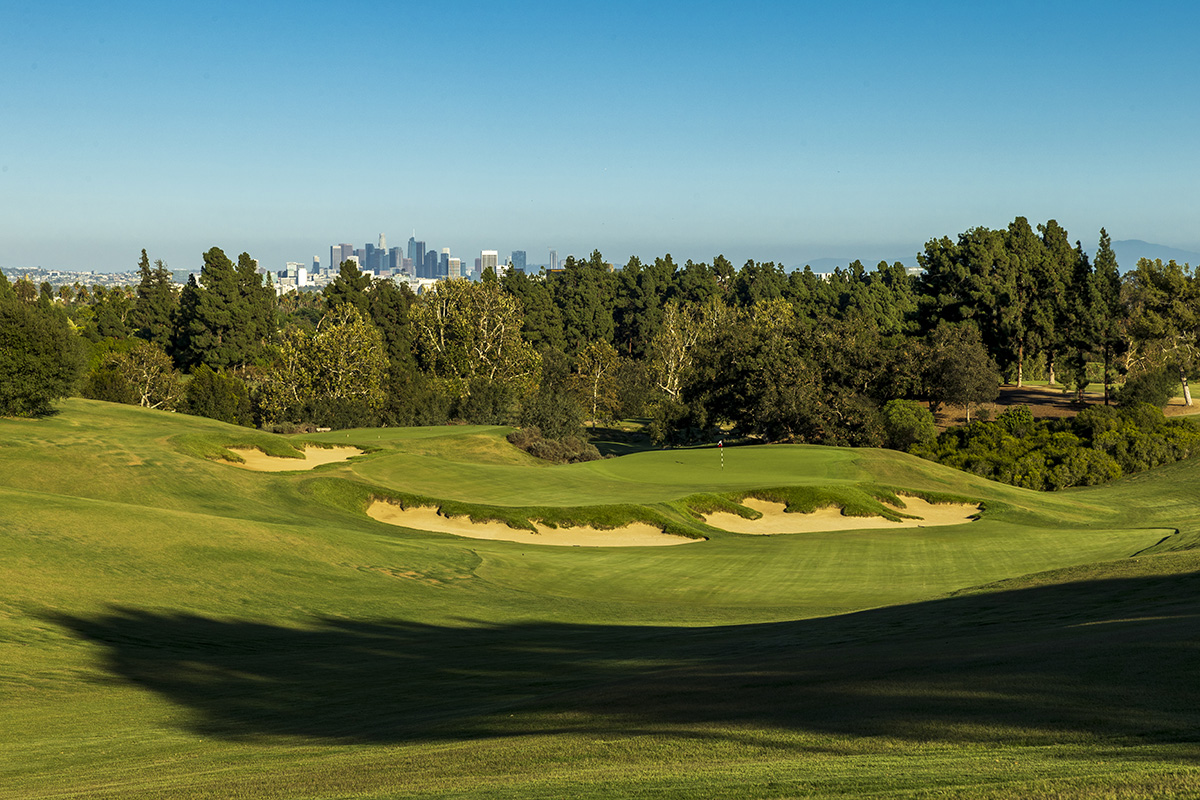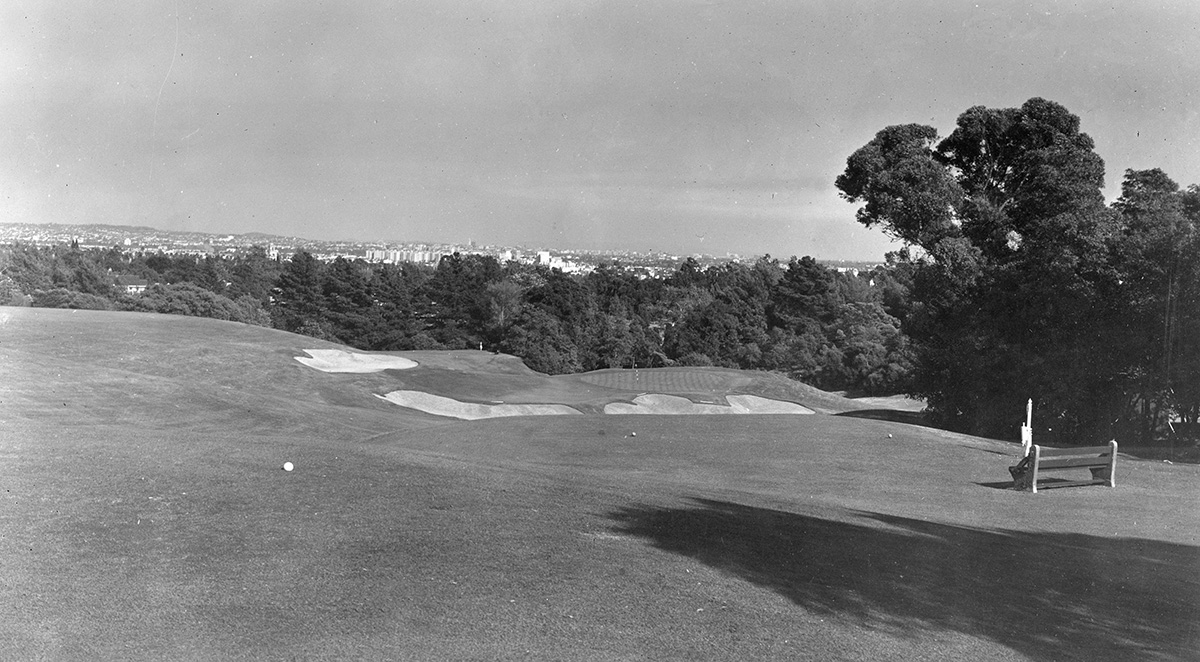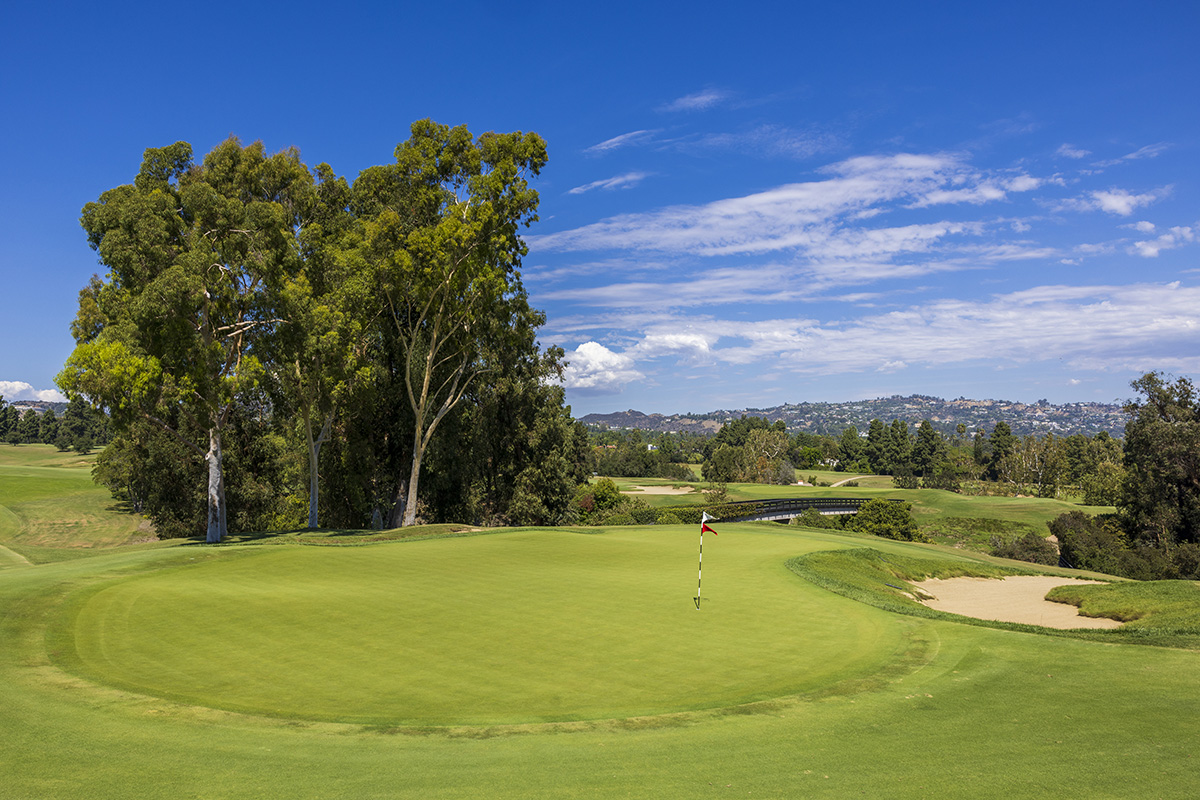
n the morning of June 15, the opening tee shots of the 123rd U.S. Open will take flight on the North Course at Los Angeles Country Club (LACC), marking the first time since 1948 that the Southern California metropolis has hosted America’s original major championship. The buzz around the 2023 Open, however, is not just about its star-powered setting or field; it’s also about the course on which the tournament will be contested, a Golden Age classic that, at least until now, has largely avoided the spotlight. “For [golf] architecture fans—and for traditional golf fans—this is probably the most anticipated U.S. Open in a long time,” says course architect Gil Hanse, who led the North Course’s restoration more than a decade ago. “Nobody’s ever seen this course on the national stage, so they’re excited to see it and they’re excited to see the best players in the world play it.”


Hanse and his partner, Jim Wagner, along with golf historian and author Geoff Shackelford, spent five years planning and subsequently executing a comprehensive revitalization of the North Course, which reopened for play in 2010. The course and club’s roots can be traced back to 1897, when a group of bankers and civic leaders organized an association—then called the Los Angeles Golf Club—to embrace a sporting activity that, although not new, was very much a novelty on the West Coast. After quickly outgrowing two locations, the club relocated to its current Beverly Hills location in 1911. A decade later, British course architect W. Herbert Fowler built two 18-hole courses at the club, with American architect George C. Thomas Jr. in a supporting role. The two tracks, North and South, have served as LACC’s foundation during the 100 years since, although much of Fowler’s original designs didn’t even survive the decade.
Los Angeles’ population more than doubled during the 1920s, and LACC’s members decided the club needed a more dynamic course, something that reflected the energy of the nascent city. So just a few years after it opened, the North Course was slated for a redesign by Thomas, who had since formed a partnership with William Bell. The duo had recently completed courses at the nearby Bel-Air and Riviera country clubs, and the “Captain,” as Thomas was known—a nod to his tour of duty as a pilot during World War I—declared that their new North Course would “surpass Ojai, Riviera or any other of my former courses.”
“I think what Thomas realized is through the implementation of Fowler’s design there were opportunities missed,” Hanse says. “From what we could ascertain, there was a sense of naturalness that was missing from the Fowler course. It was much more rudimentary, with oval bunkers and squared greens—very much the sort of traditional British approach to golf architecture, and not nearly as much of the natural approach that Thomas and certainly [Alister] MacKenzie championed.”
“To have those greens preserved like they were in amber, it was mind-boggling to see” —Gil Hanse

Like MacKenzie, Thomas developed a signature bunker style, one that featured finger-like extensions that protruded out from the sand trap’s center. Additionally, the Captain’s bunkers were often rimmed by shaggy fescue grasses, which created a more organic, natural look. “Our bunker style evolved out of our study of Thomas,” Hanse says. “We got better at bunker building after we did LACC. What we built there has had more of an influence on us versus us having more of an influence on Thomas’s work.”
The bunkers that Hanse and Wagner built on the North Course aren’t identical to what Thomas and Bell created there. Rather, the course designers took inspiration from Thomas and Bell’s other courses in the area, specifically Riviera and Bel-Air. “Our representation was historically accurate in the way the holes were laid out, the green sizes, etc.,” Hanse says. “But we took a little bit of artistic license in looking at a more evolved style of Thomas’s bunkering. We felt comfortable presenting the evolved bunker style because, number one, we thought it was better and more dramatic. It was just the better version of Thomas.”

When it came time to restore the course’s green complexes, Hanse, Wagner and Shackelford relied mostly on archival photos and written documents, making educated guesses where necessary. In two instances—on the second and sixth holes—they uncovered the remnants of Thomas’s original greens buried under about eight feet of top soil. The discoveries were remnants of a 1960s renovation that relocated the greens—and simply covered the old ones with loads of dirt. “To have those greens preserved like they were in amber, it was mind-boggling to see,” Hanse says, noting that faint rings delineating the last-used hole locations on those greens could be detected. “We feel like we’ve replicated the second and sixth greens with a high degree of specificity because we found them.”
Where possible, Hanse also stayed true to Thomas’s use of topography, which he says the designer understood could be an even greater defense against low scores than traditional hazards. “He figured a firm and hard golf course with all the tilted slopes and rolls…if you hit it on the wrong side of the fairway, the ground was going to take it in a direction you didn’t want to go,” Hanse says.
To preserve that aspect of the course’s architecture and keep those challenging contours in play for the world’s best golfers, Hanse and Wagner moved tee boxes back where they could. (In total, they lengthened the course by about 250 yards.) But on holes where additional length could not be introduced, they repositioned fairway bunkers farther away from the tee boxes or extended natural barrancas.
When Thomas redesigned the course in 1927, he purposefully created wide fairways to account for the fact that balls were likely to bounce and roll significantly across the firm terrain. According to Hanse, the USGA plans to preserve many of those wide corridors when setting up the course for the U.S. Open. “By and large,” he says, “these fairways are going to be significantly wider than average U.S. Open fairways, which means angles are going to be important. If you have a 27-yard-wide fairway, guys aren’t trying to get to the left side or the right side; they’re just trying to get into the fairway. But here, we’re talking about 35- or 40-yard-wide fairways in a lot of instances, so guys are really going to try to play for different angles based on hole locations. That’s going to make for a really compelling test.”
An all-star lineup of the world’s top golfers will be ready to take that test come June 15 in Los Angeles. It is the course on which they converge, however, that might shine the brightest at the 123rd U.S. Open.
Follow Us On


| Cookie | Duration | Description |
|---|---|---|
| cookielawinfo-checkbox-analytics | 11 months | This cookie is set by GDPR Cookie Consent plugin. The cookie is used to store the user consent for the cookies in the category "Analytics". |
| cookielawinfo-checkbox-functional | 11 months | The cookie is set by GDPR cookie consent to record the user consent for the cookies in the category "Functional". |
| cookielawinfo-checkbox-necessary | 11 months | This cookie is set by GDPR Cookie Consent plugin. The cookies is used to store the user consent for the cookies in the category "Necessary". |
| cookielawinfo-checkbox-others | 11 months | This cookie is set by GDPR Cookie Consent plugin. The cookie is used to store the user consent for the cookies in the category "Other. |
| cookielawinfo-checkbox-performance | 11 months | This cookie is set by GDPR Cookie Consent plugin. The cookie is used to store the user consent for the cookies in the category "Performance". |
| viewed_cookie_policy | 11 months | The cookie is set by the GDPR Cookie Consent plugin and is used to store whether or not user has consented to the use of cookies. It does not store any personal data. |